Art Fairs
See the Hottest Trends at Photo London 2016
Photos of Rock and Roll legends lead the pack.
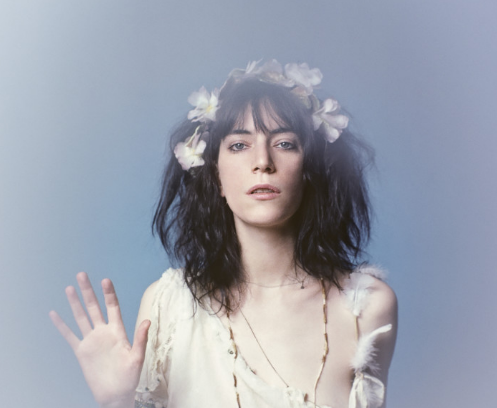
Photos of Rock and Roll legends lead the pack.

Lorena Muñoz-Alonso

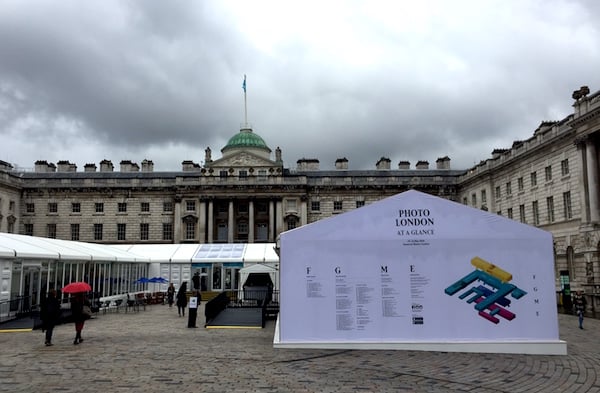
Photo London 2016 at Somerset House. Photo: Lorena Muñoz-Alonso.
The second edition of PhotoLondon—London’s response to Paris Photo—is here, and not the even the rain-laden clouds could deter the throngs of art collectors and photography lovers from marching through the gates of the regal Somerset House to attend the press and VIP preview yesterday.
The first edition of the fair last year, was a roaring success in terms of attendance and sales, and this year’s edition hosts more exhibitors, expanding from 70 to 85 galleries.
This explains why the fair has spilled out from the Somerset House’s labyrinthine rooms and corridors and also embraced the outdoors, erecting a new tent (or “pavilion”) in the patio of the former palace, hosting the booths of a dozen galleries, including Hamiltons Gallery, Ben Brown Fine Arts, and Galerie Daniel Blau.
The VIP lounge is also in an outdoor tent this year, right on the bank of the river Thames. This was probably a good idea on paper: imagining fair-goers lounging al fresco under the nice warm sun of a May afternoon.
Reality was a little bit of a washout yesterday, as three lone VIPs dared to sip their champers under the soaked marquee at one point. But with the public having to take refuge from the rain indoors, the preview was truly heaving already well before noon.
Swiss uber-collector and philanthropist Maja Hoffmann was thus seen perusing the booths (though no surprises here, as her LUMA Foundation is one of the key sponsors of the fair), as was Eugenio Re Rebaudengo, perhaps looking for young talent to feature on Artuner, his online art venture. Also spotted was Tate’s senior photography curator Simon Barker, who earlier this year delighted with his exhibition “Performing for the Camera” at Tate Modern.
Walking from booth to booth (or, rather, from room to room) a series of recurring themes and trends emerged. This is what we saw:
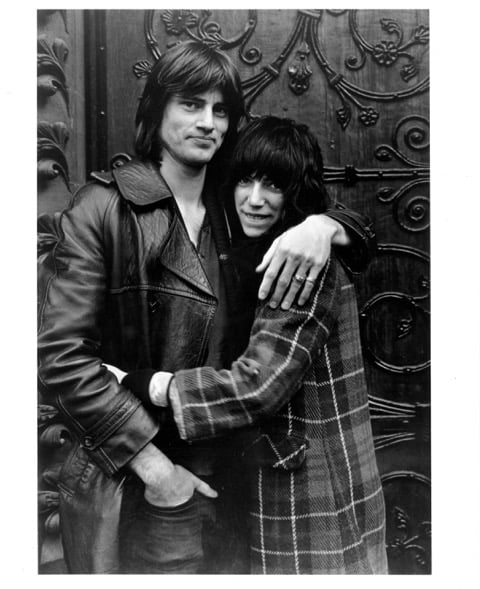
Gerard Malanga, Patti Smith & Sam Shepard after brunch in Knightsbridge, London (1972). Photo: Courtesy Caroline Smulders.
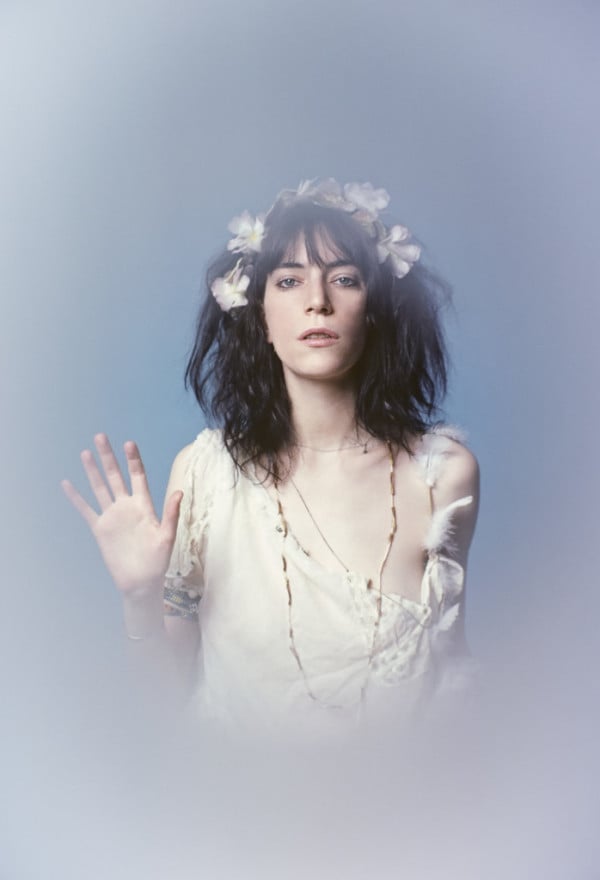
Lynn Goldsmith. Patti Smith White Dress on Blue Hand Up (1977).
Image: Photo © Lynn Goldsmith. Courtesy of Caroline Smulders
1. Rock and Roll legends and cult celebrities
Photography is still the best tool available to fetishize rock stars and “damned” celebrities and, as such, there were plenty of cult images to obsess about at the fair.
The best selection came courtesy of Paris-based gallery Caroline Smulders with “Music and Poetry Never Die,” a presentation curated by Aline Pujo which gathered iconic portraits of Patti Smith, Robert Mapplethorpe, Sam Shepard, John Cage, Bob Dylan, the Velvet Underground, Nico, Andy Warhol, David Bowie (as Andy Warhol), and Edie Sedgwick by photographers Gerard Malanga, John Cohen, Nat Finkelstein, Lynn Goldsmith, Françoise Janicot, and Marcia Resnick. With prices ranging between £1,000 and £5,000, these images are not only iconic, they are also a steal.
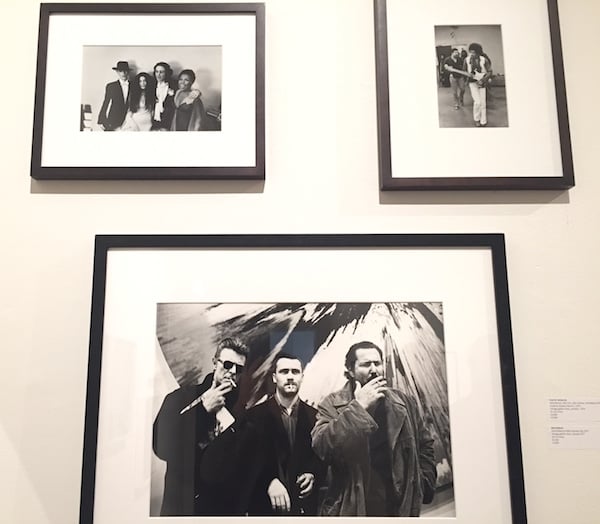
Rock and Roll royalty meets art royalty at the booth of Steven Kasher Gallery at Photo London 2016. Photo: Lorena Muñoz-Alonso.
Steven Kasher Gallery also explored the subject, offering images of cult 1980s UK music acts Depeche Mode, Siouxsie Sioux (from Siouxsie and the Banshees) and Jimi Hendrix, and a number of great group photos—including the iconic image of David Bowie, Damien Hirst, and Julian Schnabel taken by American photographer Roxanne Lowit in 1996 (which could be yours forever for $5,500), and another one of Bowie with Yoko Ono, John Lennon, and Roberta Flack taken in the 1970s.
There’s also Taschen, who featured Gered Mankowitz’s iconic image of the Rolling Stones, titled Smiling Buttons (1966).
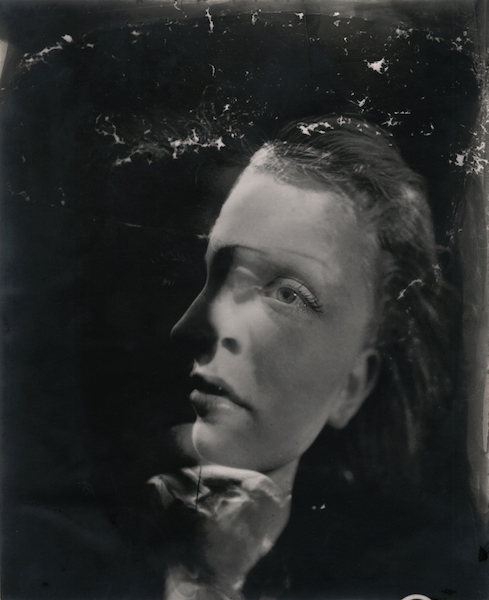
Dora Maar, Double Portrait (ca. 1930s). Photo: Courtesy Robert Klein Gallery.
2. Black & White
Black and white photography reigns supreme at Photo London (and it did last year too). This is perhaps because a large number of the galleries participating in the fair bring historical photography, which dominates the ground floor, with the more contemporary works scattered across the first floor, mezzanine, and outdoor pavilion.
For lovers of the discipline, this shouldn’t be a cause of concern but of celebration, because by walking around the fair one can get a priceless and lovely crash course in the history of the medium.
In that line, the booth of Robert Klein Gallery was a gem, with its stunning selection of classics (with an accent on nudes) by Rudolf Koppitz ($265,000), Horst P. Horst, Francesca Woodman, Man Ray, Edward Weston, and Dora Maar.
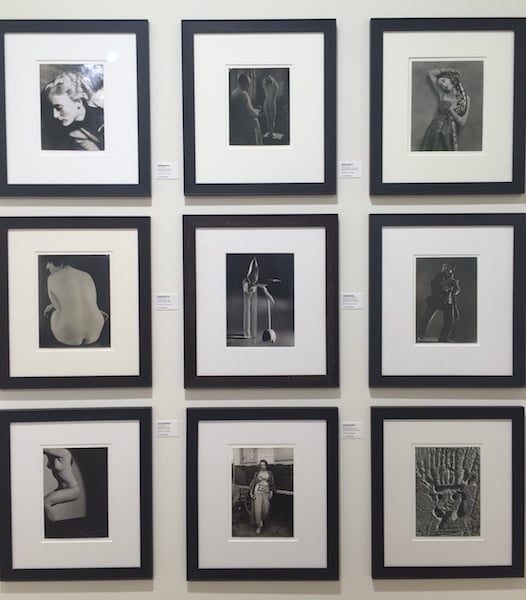
Installation view at the booth of Galerie Johannes Faber at Photo London 2016. Photo: Lorena Muñoz-Alonso.
At Galerie Johannes Faber, another selection of classics including Brassaï, Henri Cartier-Bresson, André Kertész, Germaine Krull, and Dennis Hopper had been staged in fantastic cluster compositions, establishing dialogues and connections between this diverse group of practitioners (with prices ranging from £2,800 for a 1965 portrait of Cecil Beaton by David Bailey, to £2,200,000 for August Sander’s 70 Portraits of the Century series).
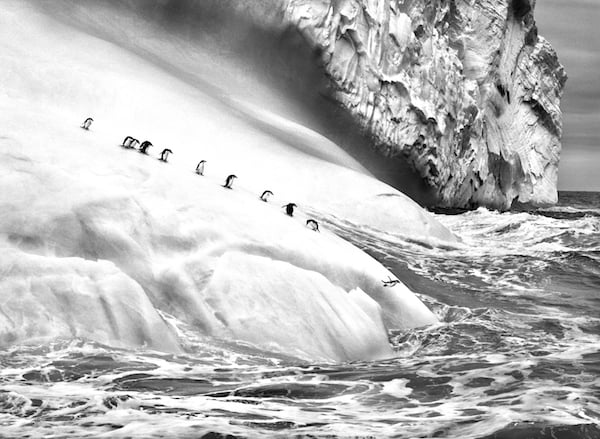
Sebastião Salgado, Chinstrap Penguins on an iceberg located between Zavodovski and Visokoi islands. South Sandwich Islands (2009). Photo: ©Amazonas Images/Courtesy Peter Fetterman Gallery, Santa Monica.
Prime examples of more contemporary uses of black and white also abounded, like the epic images of the Brazilian photographer Sebastião Salgado, of whom Peter Fetterman Gallery brought a generous selection, almost like a solo-show-within-a-booth.
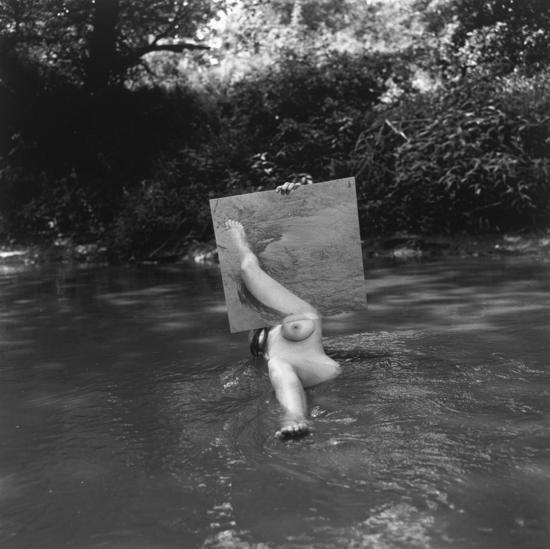
Hans Breder, Old Man’s Creek (1971). Photo: Courtesy Danziger Gallery.
3. Beautiful bodies, hedonistic bodies
The human body has always been one of the key subjects in photography. Whether a meditative, classic look at the beauty of the female form à la Edward Weston, a curious and tender look to freaks and outcasts championed by Diane Arbus, or a celebration of youth and hedonism courtesy of Ryan McGinley, bodies have enchanted the camera for over two centuries in myriad ways.
At Danziger Gallery, a group of four unique vintage gelatin silver prints by Hans Breder from 1970-1 (£6,250 each) were not only beautiful, but also key historical documents that attest to the huge influence he had been to a number of artists, particularly his partner of 10 years Ana Mendieta, whom he taught at the University of Iowa from 1972 to 1977.
Breder’s models insert themselves in either interior spaces or in nature, holding mirrors to their bodies, multiplying and distorting their limbs, which Mendieta and Francesca Woodman also began experimenting with later in the 1970s (Joan Jonas, however, was probably the first to do so in her 1969 Mirror Piece I).
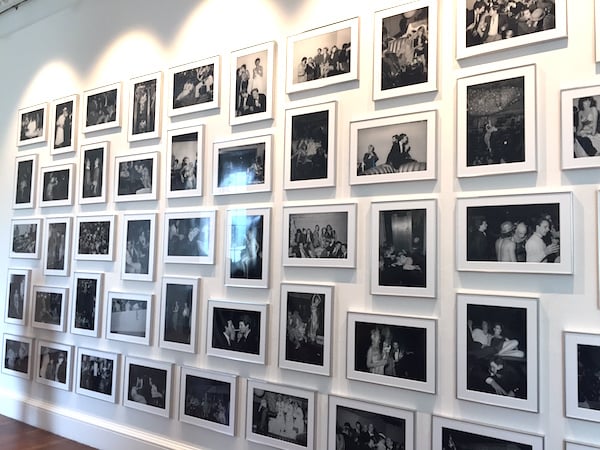
Installation view of Tod PapaGeorge’s Studio 54 series at the booth of Galerie Thomas Zander at Photo London 2016. Photo: Lorena Muñoz-Alonso.
In contrast to Breder’s restrained performativity, at Galerie Thomas Zander, a whole wall of its huge booth is devoted to Tod PapaGeorge’s documentation of the exploits that took place at the legendary New York club Studio 54 between 1978 and 1980. At the fair, around 48 of the total 70 images that form the complete portfolio—which has a price tag of €195,000 and had never been reproduced or exhibited before—were hung salon style, filling the room with nostalgic vibrancy.
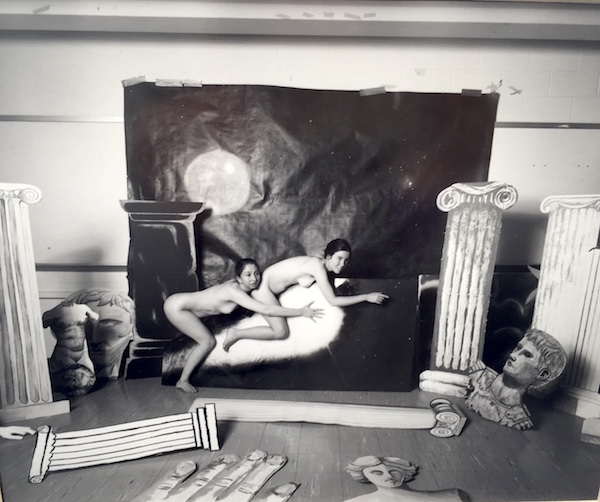
Detail of a photograph by Leslie Krims at the booth of Paci Contemporary at Photo London 2016. Photo: Lorena Muñoz-Alonso.
Nearby, at the stand of New York’s Howard Greenberg Gallery, a 1974 portrait of Charlotte Rampling sitting naked on a table and looking defiantly back towards Helmut Newton’s camera was erotic and elegant, while, over at the pavilion, Paci Contemporary’s presentation of American photographer Leslie Krims was a much more playful and irreverent riff on eroticism and the nude genre.
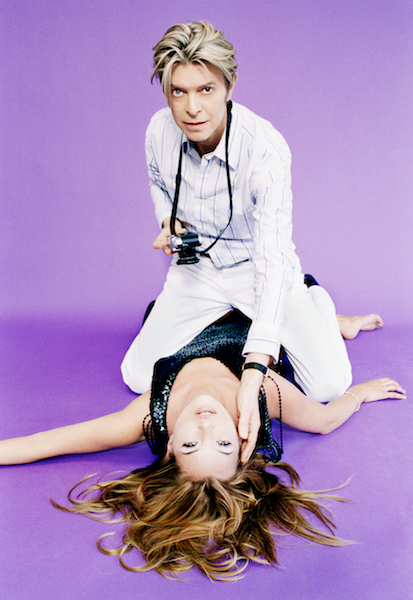
David Bowie and Kate Moss by Ellen von Unwerth. Photo: Courtesy Camera Work.
4. David Bowie
Bowie-related images were so ubiquitous in many booths (particularly at the above-mentioned Caroline Smulders and Steven Kasher Gallery) that he merits an entry all to himself.
The biggest display came courtesy of Berlin-based gallery Camera Work, which devoted a whole long walls to images of the much-mourned English musician, actor, and singer, who died in January.
Two images of Bowie fought for attention. In one of them, shot by Ellen von Unwerth, Bowie replicates the iconic poster image of Michelangelo Antonioni’s Blow-Up with Kate Moss as his model (it doesn’t get any more London-centric than that).
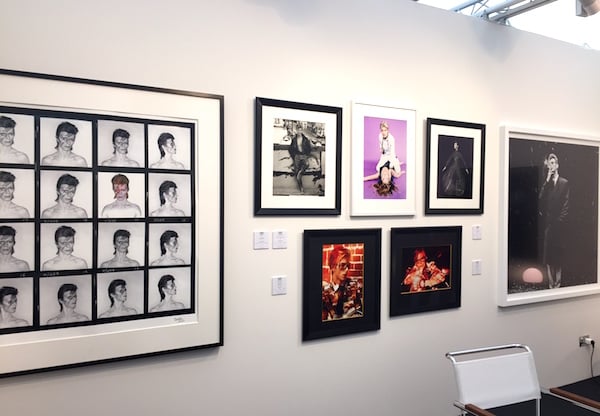
Wall devoted to images of David Bowie at the booth of Camera Work at Photo London 2016. Photo: Lorena Muñoz-Alonso.
The other is a portrait of the star, looking pensive while smoking a cigarette, taken in 1993 in LA by Anton Corbijn, in his signature monumental and stark style (and with a significant price tag of €23,000).
But it was perhaps a large-print of the contact sheet of the iconic photos taken by Brian Duffy for the cover of Bowie’s 1973 album Aladdin Sane which stole the show. With a price of €78,000 it is a serious investment, but owning a piece of history doesn’t come cheap.
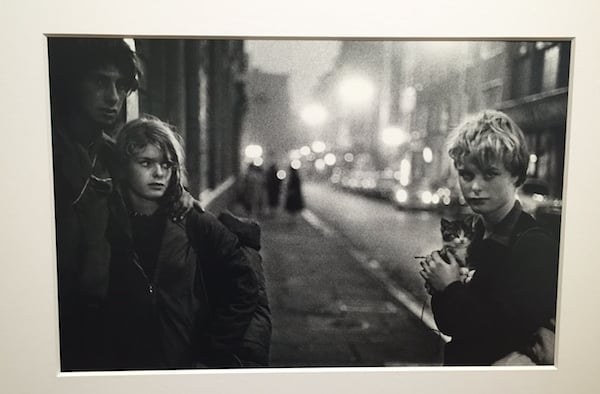
Image from Bruce Davidson’s “England Scotland 1960” series, at the booth of ROSEGALLERY at Photo London 2016. Photo: Lorena Muñoz-Alonso.
5. Britannia rules the waves (but Europe does too)
Indeed, there was a pervasive scent of Anglophilia wafting across the whole of PhotoLondon (when in Rome …) evidenced by the sheer number of images of the Rolling Stones and David Bowie, and even by the “Rankomat,” a photo-booth in which fair-goers can have their portrait taken for free in the “signature style” of British fashion photographer powerhouse Rankin (I did it myself in the name of journalism, and the result looks pretty much like any other photo-booth image, with just an added bit of lighting).
In that same line, a number of galleries presented works that documented life on the streets of the British Islands. Among them, ROSEGALLERY stood out with its selection of works by English vernacular photographer Martin Parr, Evelyn Hofer’s “Dublin” series, and Bruce Davidson’s iconic “England Scotland 1960” series.
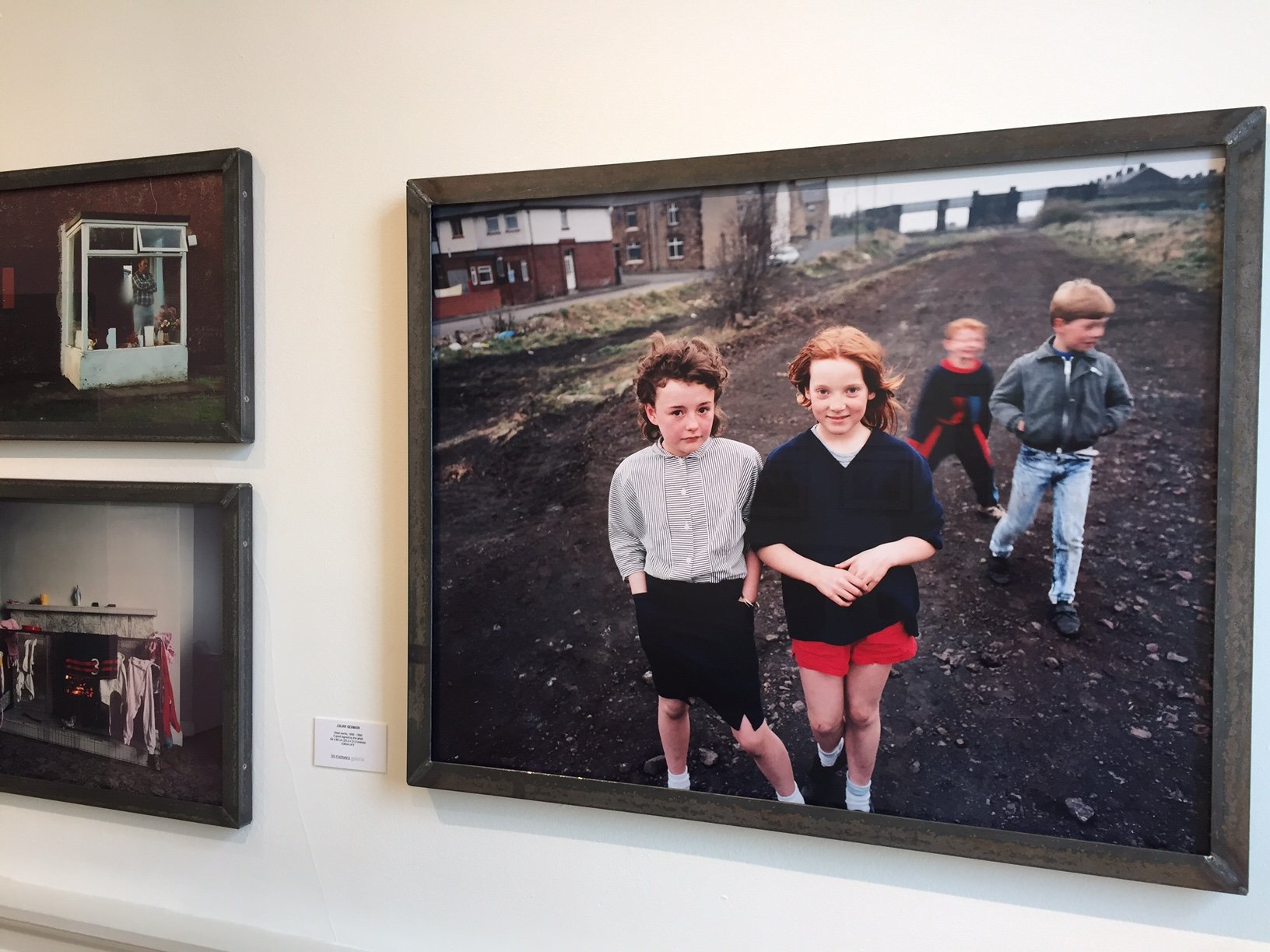
Images from Julian Germain’s For every second you are angry you lose sixty second of happiness” series, at the booth of in camera galerie at Photo London 2016. Photo: Lorena Muñoz-Alonso.
At the stand of the Paris-based in camera galerie, the London-born photographer Julian Germain presented two powerful series exploring life in small-town England: “Steelworks,” shot in the late 1980s; and “For every second you are angry you lose sixty second of happiness,” which was first published as a book in 2005.
Outside, though, and on a less “nationalistic” note, Wolfgang Tillmans’ anti-Brexit poster campaign had been installed in full for the first time in an exhibition format, urging British fair-goers to register to vote on the June 23 referendum in favor of staying in the European Union.
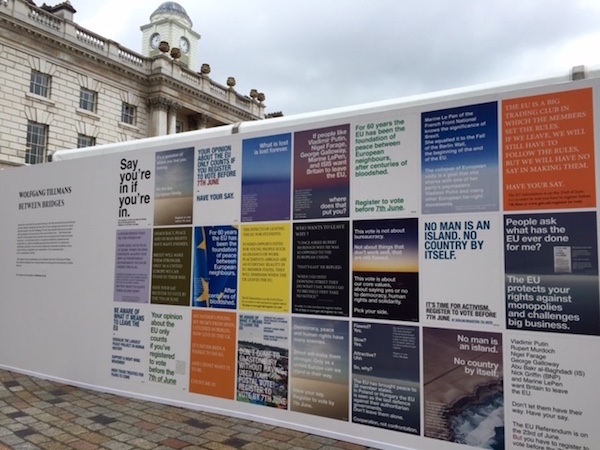
Wolfgang Tillmans’ anti-Brexit poster campaign at Photo London 2016. Photo: Lorena Muñoz-Alonso.
Photo London 2016 is on view at Somerset House, London, from May 19-22, 2016.